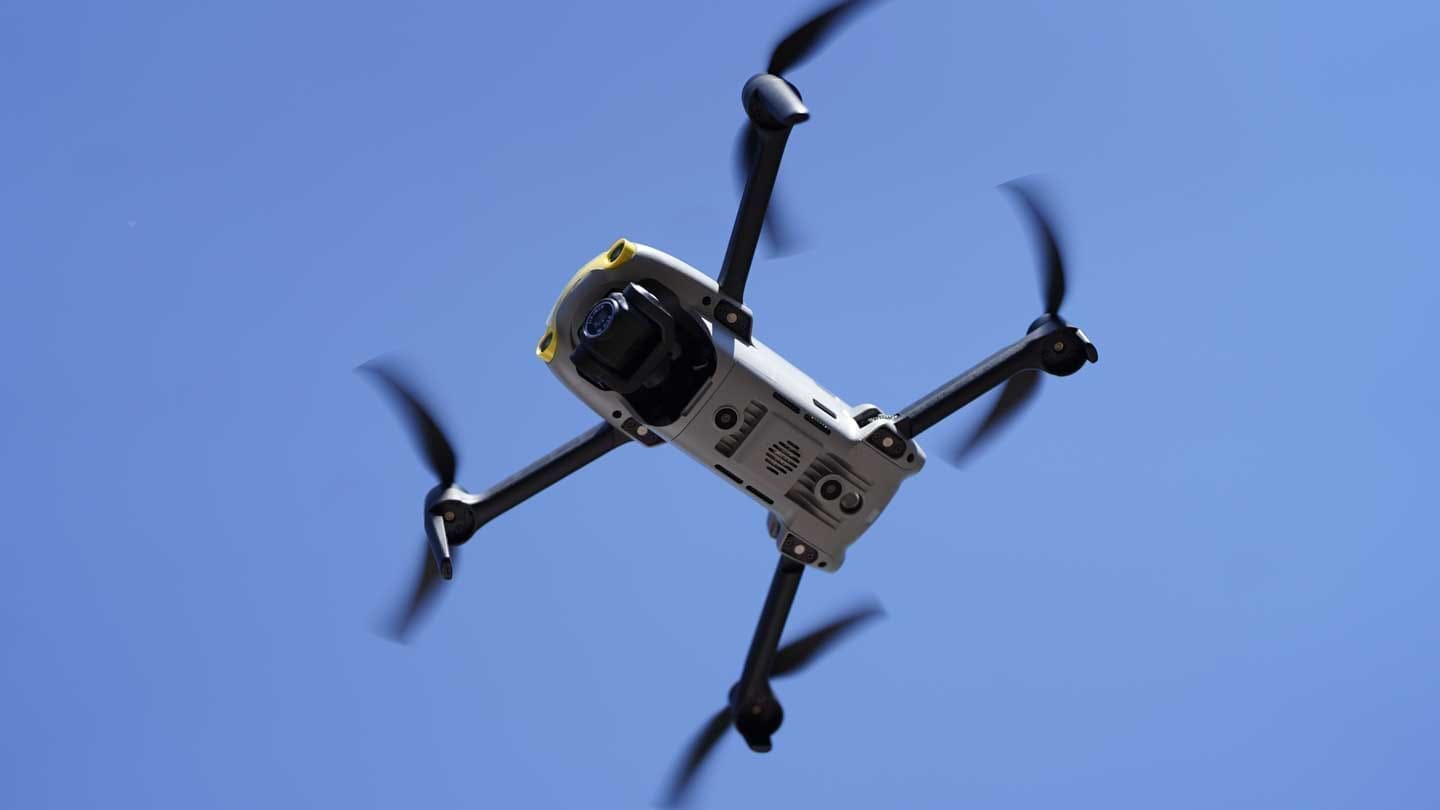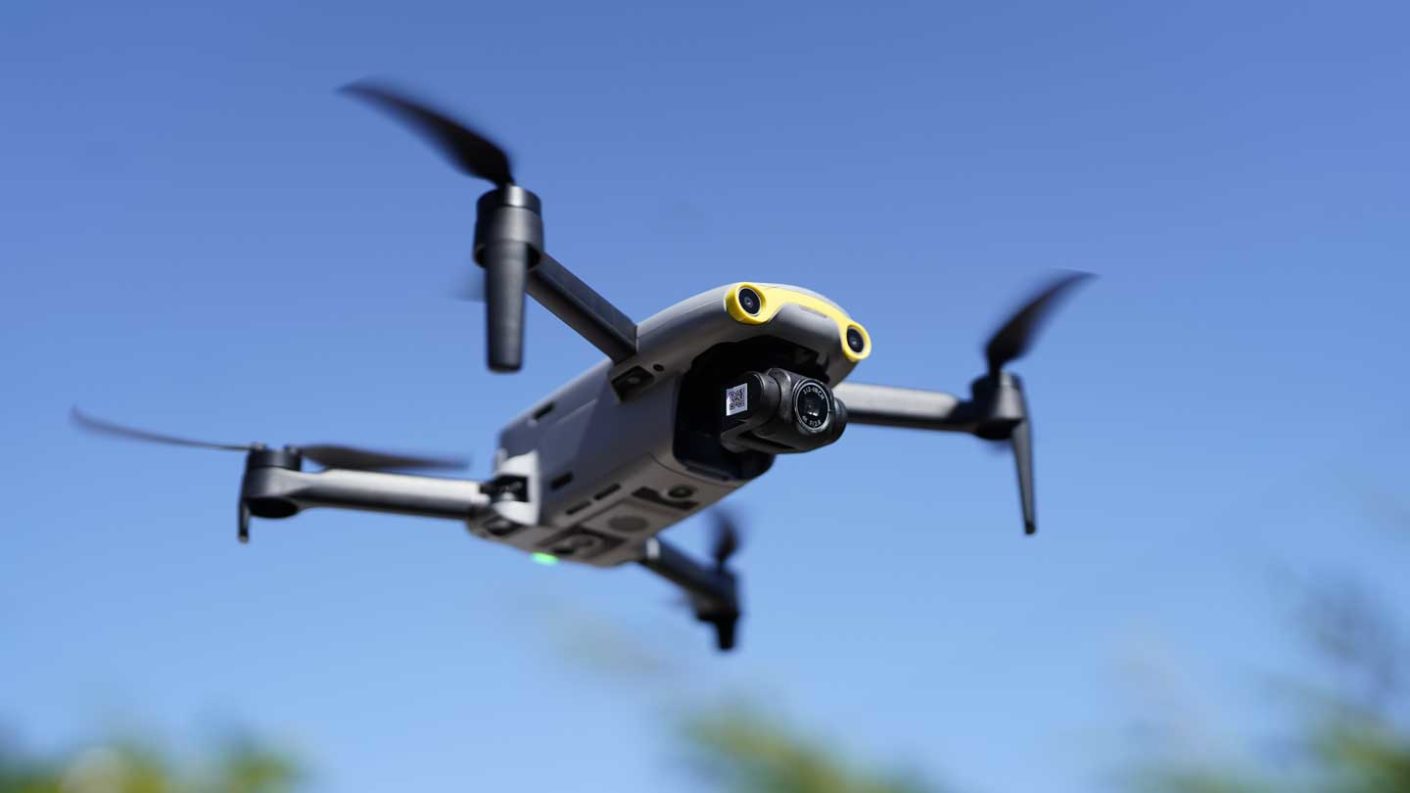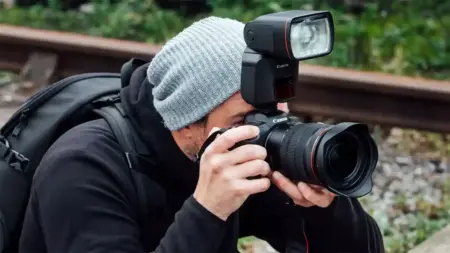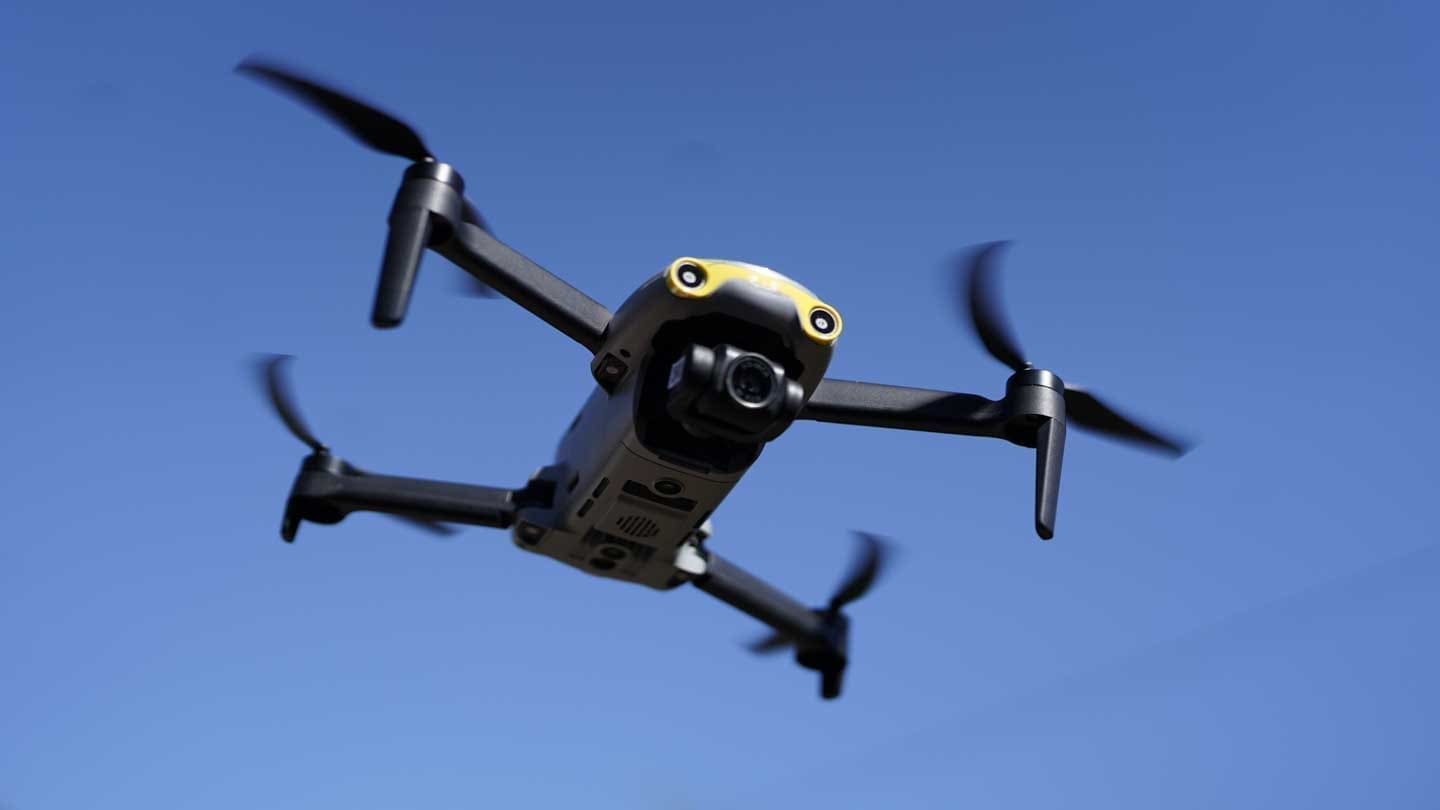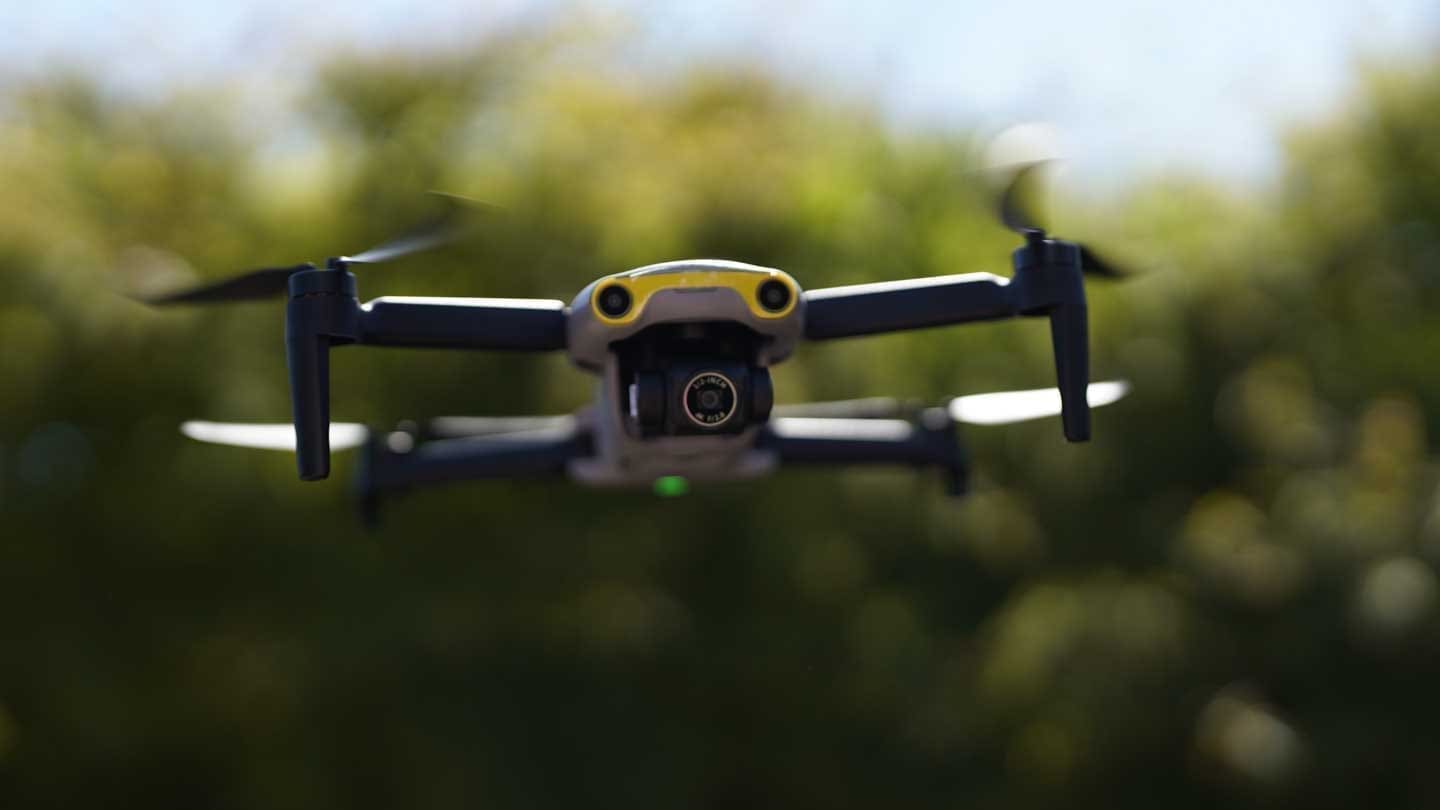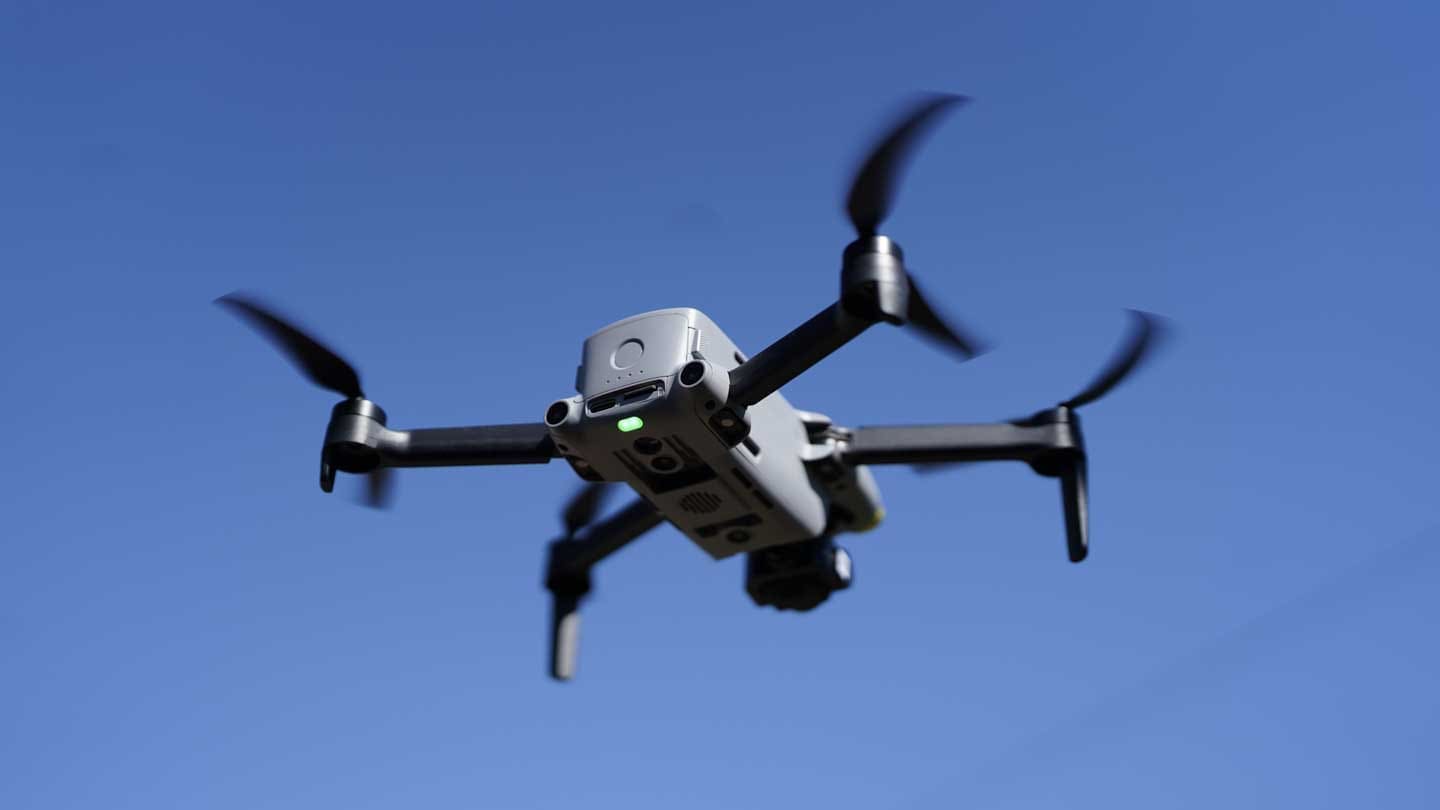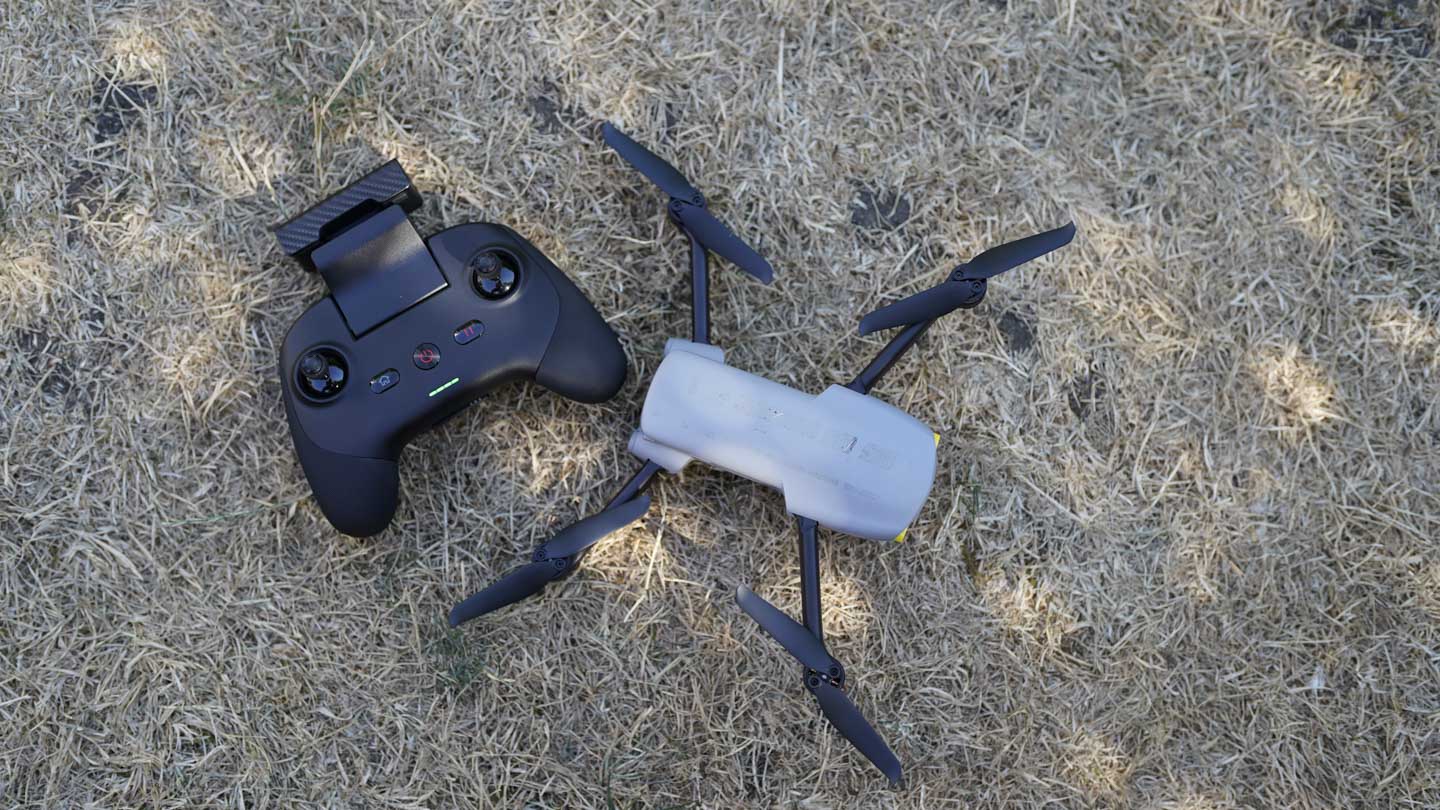After the initial setup taking off the drone is easy, pull the two sticks towards the middle, and the props start, ease up on the left stick, and the drone raises steadily off the ground.
After a few quick flight checks, everything seemed in order, I switched on the object avoidance sensors from the outset, and the first flight was smooth and solid in standard flight mode.
Switching to smooth and the flight speed is lethargic, but sure enough, the quality and stability of the footage can only be described as smooth. With the speed of flight in Smooth mode and the sensors, the EVO Nano is incredibly easy to control. While the conditions are calm, with only the lightest of breezes, the drone’s control is reassuringly solid.
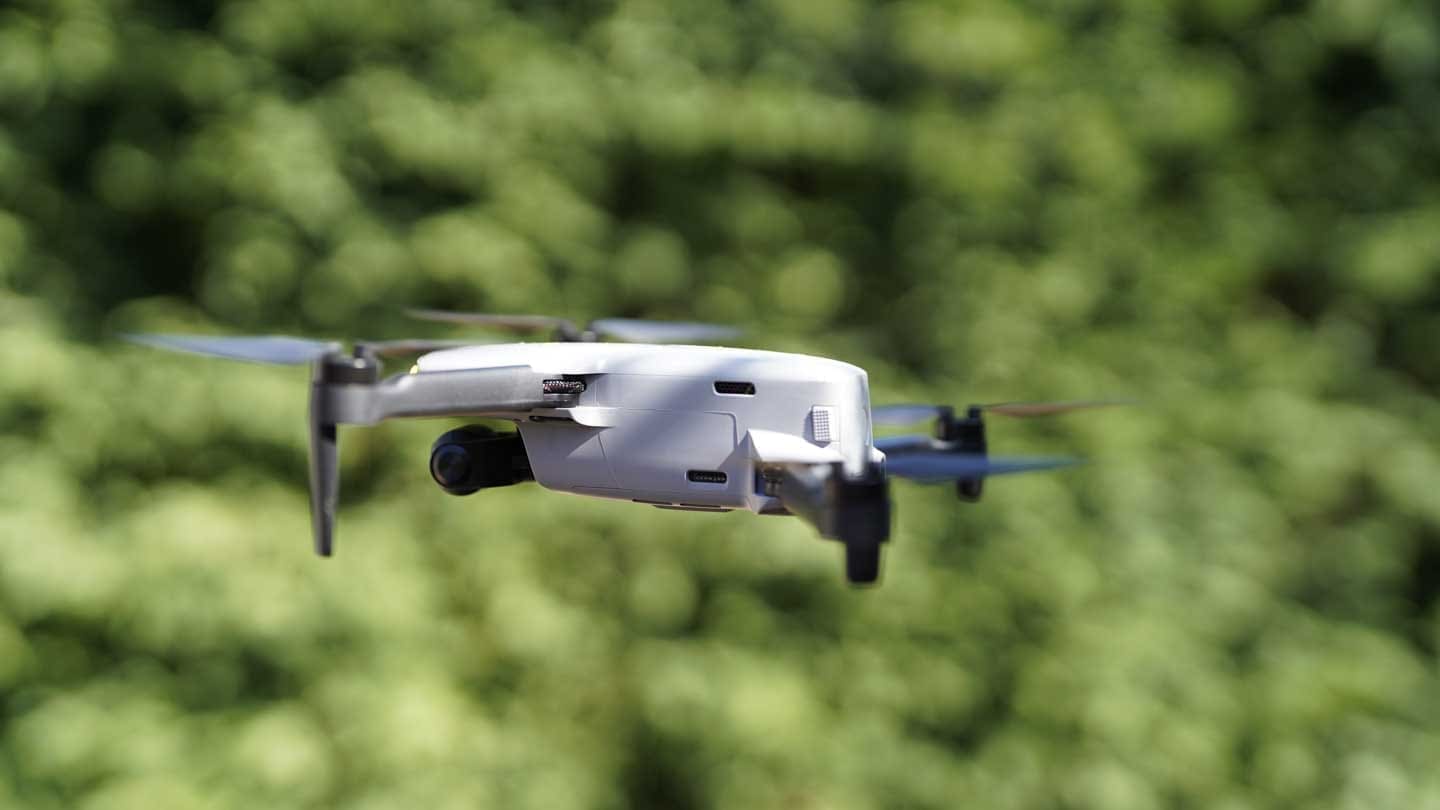
Switching to ludicrous flight mode and the pace picks up – it’s by no means FPV speed but fast enough for you to have some fun and get the drone to the position you want to start filming before switching to Smooth.
Filming can all be controlled through the Autel Sky App, with a simple touch on the screen to start and stop recording. Likewise, all settings are accessed through the touch screen interface.
If you want to, there’s a direct record/shutter button on the top right of the controller. Alongside the button is the gimbal angle adjustment; rotate it left or right to lower or raise the angle during flight.
While I’m on the controller, there’s the home button, tap this, and the drone will return to the take-off point, although once it has started its journey, there’s no stopping it or cancelling the command.
To the right is the pause button; this is handy if you want to take a break from flying and leave the drone hovering in one position; press release it back into flight.
Accessing all the different photo and video modes is also extremely easy. A tap on the icon at the top enables you to switch between manual camera, panorama and many more options.
Overall in flight, the small Autel EVO Nano was outstanding, smooth when you needed it to be for filming and picking up the pace when you wanted to have fun.
Returning home and checking through the footage and the quality instantly stood out; this drone was more than capable of capturing some of the highest quality footage possible from a drone of this size.
The detail of the 4K video at 30fps is exceptional, although dropping the framerate down, to me, makes little or no sense. Checking the footage at 2K and 1080p, the quality of the tone and colour is excellent. It’s a shame that the framerates at 1080p are still limited to a rather low 60fps.
There is also a slight issue with a lens flare that you’ll see in some of the footage; overall, considering the drone’s size, the quality however is outstanding.
